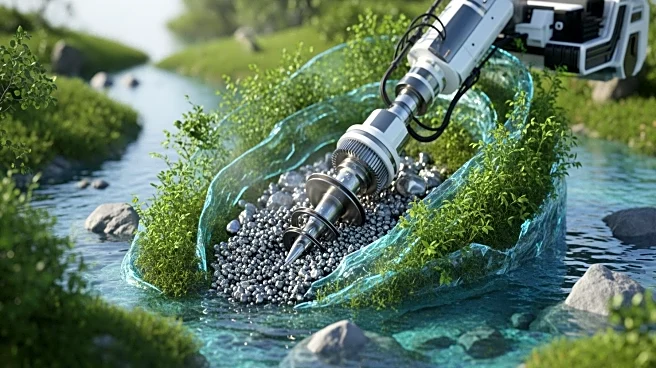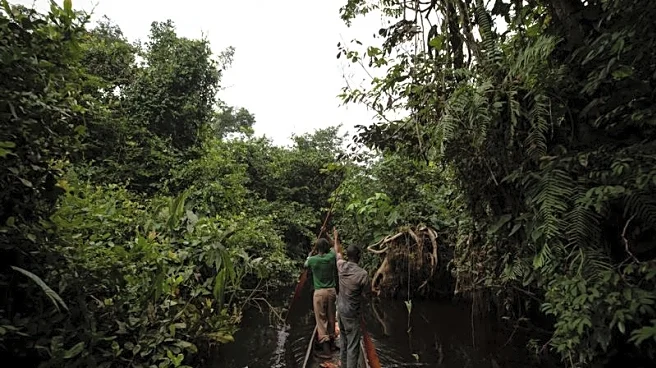What's Happening?
Chinese scientists have made a groundbreaking discovery of rare-earth biomineralization in ferns, specifically in the species Blechnum orientale. This discovery, led by Zhu Jianxi from the Guangzhou Institute
of Geochemistry under the Chinese Academy of Sciences, introduces a cleaner and more sustainable method for extracting rare-earth elements. The research team utilized phytomining, a green technique that employs hyperaccumulator plants to extract metals from soil, offering a potential solution to the environmental challenges posed by traditional rare-earth mining. The findings reveal that Blechnum orientale can absorb and concentrate rare-earth elements in its leaves, crystallizing them into nanoscale monazite. This biological mineralization process occurs under ambient conditions, unlike geological processes that require higher temperatures.
Why It's Important?
Rare-earth elements are crucial for high-tech industries, including artificial intelligence, new energy, and national defense. The discovery of biomineralization in ferns presents a sustainable alternative to traditional mining methods, which often have significant environmental and geopolitical challenges. By cultivating hyperaccumulator plants like Blechnum orientale, contaminated soil can be remediated, and rare-earth mine tailings restored, while simultaneously recovering high-value rare-earth elements. This approach could lead to a green circular model of restoration alongside recovery, reducing reliance on environmentally damaging mining practices and potentially stabilizing the supply of these strategic resources.
What's Next?
The discovery opens new avenues for research into nearly a thousand known hyperaccumulator plants, expanding the understanding of biomineralization mechanisms in plants. Further studies could explore the cultivation of these plants on a larger scale to enhance the sustainable extraction of rare-earth elements. Additionally, the findings may influence policy and industry practices, encouraging the adoption of phytomining techniques to address environmental concerns associated with rare-earth mining.
Beyond the Headlines
The ability of plants to 'produce minerals' has been underestimated, and this discovery highlights the potential for biological processes to contribute to industrial resource extraction. The formation of non-radioactive 'biological monazite' by Blechnum orientale under natural conditions offers a safer alternative to traditional monazite, which often contains radioactive elements. This could lead to advancements in green extraction technologies and influence the future of rare-earth element utilization.












